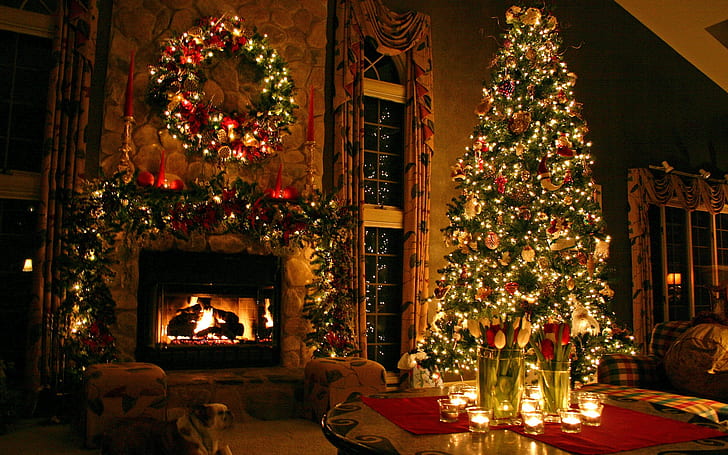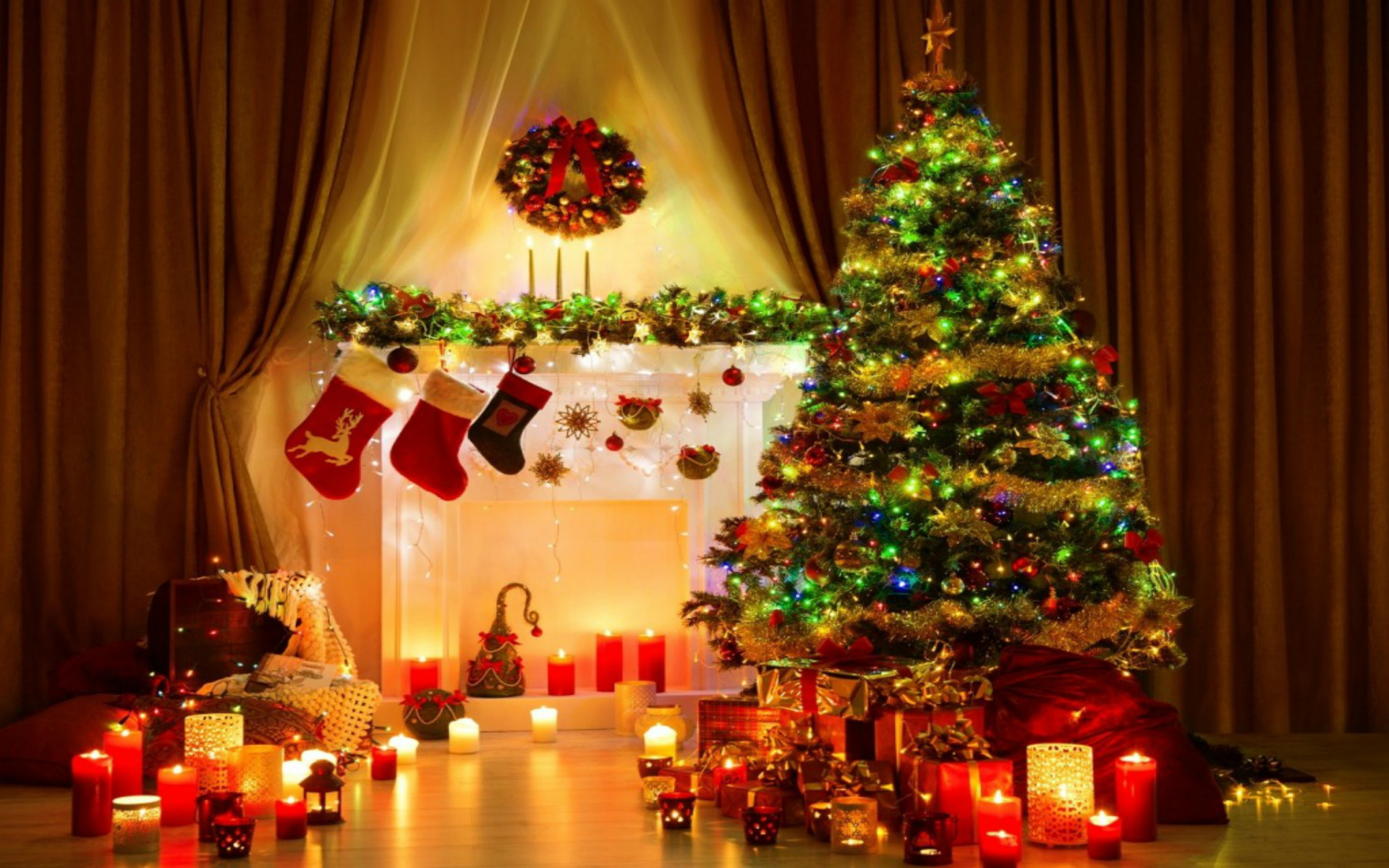
Christmas Tree And Its History Since Ancient Times
Numerous antiquarians and anthropologists concur that the historical backdrop of Christmas trees starts in post-antiquated times, similarly as agrarian social orders were created across the globe. There was no such thing as Christmas. It was essentially, in some cultures, an agnostic festival of the colder time of year solstice. The colder time of year solstice denotes the briefest day of the year which typically happens on the 22nd or 23rd of December. The branches of evergreen trees were brought inside to safeguard occupants from the insidious spirits that could cause starvation and sickness.
Antiquated people groups likewise dissipated evergreen branches over their floors, entryways, and around windows. As a matter of fact, the custom of hanging an evergreen festoon comes from the practice of draping evergreens over the mantelpiece to keep witches, phantoms, and spirits from going down the smokestack and into the house.
Evergreen limbs were additionally used to ward off ailments. Fragrances like pine, juniper, and amber are as yet utilized by aromatherapists today to fight off disease and winter wretchedness.
Indeed, even the old Egyptians were remembered to assume a part throughout the entire existence of Christmas trees. Obviously, there were no evergreen timberlands in antiquated Egypt except for during the solstice, they filled their homes with palm hurries to shield themselves from evil and commend the arrival of their Sun God Ra.
European and Mediterranean societies likewise have episodes in the long adventure that is important for the historical backdrop of Christmas trees. On the solstice, known as Saturnalia, the Romans brightened their homes with evergreen branches. This regarded the God Saturn whose area was agribusiness. Further north, the Celtic Druids utilized evergreens on the haziest day of the year to represent timeless life. These trees were not finished as we probably are aware of them today. They were not considerably more beautifying than the popular Charlie earthy-colored Christmas tree. This is on the grounds that the capability of these evergreen branches was more defensive than celebratory.
By the twelfth hundred years, indoor trees were brought inside. No one is certain why except initially Christmas trees were draped topsy turvy from roofs at Christmastime. This was a famous custom in Focal Europe. The topsy-turvy tree was viewed as both an image of Christianity and an agnostic image. By then, Christianity was not broad and the tree might have been a sign of approval for both agnostic and Christian customs.
It is generally accepted that the historical backdrop of the Christmas tree as far as we might be concerned started in Germany in the sixteenth 100 years. Anyway, a couple of individuals understand that the tree was not gotten inside and that in reality, the main enhanced Christmas tree was a pyramid made of wood. These German indoor pyramids were embellished with branches and candles. Frequently containers of pickles were set on the means. The pyramid shape was not an immediate motivation from old Egypt but instead, the three-sided shape was remembered to address the three marks of the Heavenly Trinity - the Dad, Child, and Essence of God.
The individual attributed with adding lit candles to a genuine tree is Martin Luther - a German Protestant reformer who lived during the 1600s. The legend is that he was enlivened to do as such by seeing stars in the night sky and looking through the appendages of an evergreen while he was on a walk.
The following enormous improvement throughout the entire existence of Christmas trees was sparkle. Sparkle was imagined in Germany around 1610. Around then, the sparkle was made of genuine silver and it discolored effectively because of the smoke from the Christmas tree candles. Silver was utilized for sparkle straight up to the mid-twentieth century when it was supplanted by aluminum.
The historical backdrop of Christmas trees was non-existent in America until about the 1840s. They were now and again shown as inquisitive in voyaging sideshows. The Christmas tree-enlivening custom was viewed as heretical for a large portion of the seventeenth and eighteenth hundreds of years. It was viewed as a joke of the clearheaded festival of the introduction of Christ. In 1659, individuals were fined for hanging enhancements, truth be told. This regulation went on until the nineteenth century when the custom was brought more into normal practice by German and Irish outsiders to the US. The training was likewise made more OK when Sovereign Victoria chose to make a straight-up floor-to-roof Xmas tree part of her stylistic layout in 1846.

One contrast between European traditions and American traditions appeared to be that Europeans were more disposed to finish their trees with food, treats, and confections (and even pickles!) while Americans were more into marvelous designs. Likewise, the European Christmas trees would in general be more limited (three to four feet in level) while the Americans favored their trees to be high as can be. The two societies anyway appreciated adorning their trees with wreaths of popcorn and electric lights.
During the 1950s America saw the coming of the main counterfeit Christmas trees. This occasion was praised by Charles M. Schulz's renowned tale about the Charlie Earthy colored Christmas tree. In this tale, Charlie Brown is told by Linus, Lucy, and Shroeder to go out and find the greatest flashiest aluminum tree to use as beautification for their Christmas play. All things being equal, Earthy colored experiences passionate feelings for the most disgraceful tree ever and tracks down the genuine importance of Christmas. You can purchase a reproduction of this sort of tree which is frequently called the "pitiful charlie earthy colored Christmas tree" on the web. Consistent with the first animation, the tree flaunts only one red Christmas ball decoration on a solitary exposed appendage.
The contention about which is better - a phony Christmas tree or a genuine Christmas tree actually seethes on today. The latest improvement throughout the entire existence of Christmas trees is the arrival of the topsy-turvy Christmas tree, which is opposed by the congregation similarly as it was in the sixteenth 100 years. Assuming history continues to rehash the same thing the following pattern we will find in Xmas trees is the antiquated wooden pyramids that filled in as fake trees in agnostic times.
0 Comments